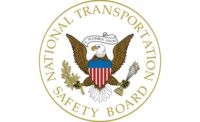Making the skies safer

The National Transportation Safety Board’s (NTSB) “most wanted” aviation safety improvement has yet to be resolved, but the collaboration that will lead to that is taking place.
That optimistic update on preventing Loss of Control (LOC) In Flight in General Aviation (GA) was provided in a recent NTSB Safety Compass blog post by member Earl F. Weener.
Not "progress" yet
“The number of LOC and fatal LOC accidents are both trending down as of 2016, our last complete year of data,” said Weener. “We won’t call that progress yet, but we might look back one day and say that it was.”
The NTSB will be collaborating with the Federal Aviation Administration, industry associations, flight schools, technology manufacturers, and others in an upcoming April 24, 2018, roundtable on LOC solutions.
Aviation safety was one of the topics at a meeting the NTSB held in November about its Most Wanted List (MWL) of transportation safety improvements. In attendance at that gathering: government, industry, and advocacy representatives from the transportation safety community.
“We learned that industry is taking the lead to improve safety, and, while some FAA initiatives have been helpful, more may be needed,” said Weener. He added that a more aggressive voluntary, collaborative approach to safety was the best way to get NTSB recommendations adopted.
Weener said changes to Part 23 of the Federal Aviation Regulations reforming small aircraft certification standards have enabled streamlined adoption and installation of new technologies, such as AOA indicators that would prevent LOC, without a lengthy and costly supplemental FAA flight certification.
“Private industry can now do what it does best: innovate.”
Weener also discusses:
- how privacy issues and data collection challenges limit the usefulness of cockpit cameras in investigations
- occupant protection systems
- the safety of lithium-ion (LI) batteries as cargo and
- managing fatigue in commercial aviation
Looking for a reprint of this article?
From high-res PDFs to custom plaques, order your copy today!








